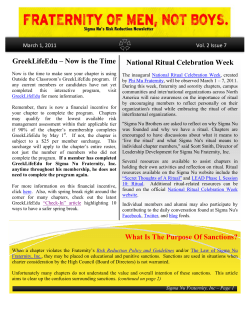
Havan is a fire ritual that celebrates the awakening of consciousness
Havan Havan is a fire ritual that celebrates the awakening of consciousness, the moment when humankind discovered fire. It is an external process, involving external ritual to connect oneself, ones inner consciousness with nature and the transcendental reality. -Adapted from Sw Niranjan. Havan is a fire ritual also which has its origins in Indian Vedic culture dating back over 4500 years. It is also called agnihotra, homa therapy or yagyopathy and these terms tend to be used interchangeably. Multiple healing therapies are involved. All natural ingredients are used in havan which have Ayurvedic healing properties. Mantra’s are chanted and offered to the fire which intensifies the effect of the mantra. A universal mantra to chant during a havan is the Mahamrityunjaya mantra. Read more about mantra here. Havans can have a powerful, transformative and healing effect. They also help to connect with and cleanse the environment. Learning the mantras can take some time so use the video and book to help. Maha Mrityunjaya Mantra Healing in the heart, home and environment Chanted 108 times during Havan Pronunciation (Bold is low, CAPS is high): Om tra-yam-BA-kam ya-jaa-MA-he su-gan-dhim pu-shti-var-dha-NAM ur-vaa-ru-ka-mi-va ban-DHA-naat mrit-yor-muk-shee-ya maam-RI-taat swa-haa We pay homage to the universal consciousness which nourishes all beings. May we be liberated from the death of ignorance through knowledge of our immortal essence, just as the cucumber is severed from the bondage of the vine. Commentary on Maha Mrityunjaya Mantra : The metaphor of the cucumber addresses the manner in which a yogi moves towards freedom or enlightenment. The cucumber’s path toward ripeness is one of action and work, filled with influences from the natural world and the variety of forces and people around and within it, just as is necessary for our own growth. There comes a point, however, where grace takes over, and there is an effortless falling away. When a cucumber is ripe, it will drop from the vine. After this natural falling away, it will appear completely whole, without any sign of separation on either end – no stem mark or scar. The cucumber does not still yearn for the vine. It is as if there never even was a vine. It is whole, complete, just as it is. Just as we are, and through effort and grace, we experience it. Transformation through Fire "Fire, whether the fire of yogic tapas (purification though heat) or the actual fire flame, burns things and transforms them into subtle forms of energy. It is fire which enables the offerings to be transformed into the subtle essence which can then nourish and restore the environment. Moreover, by breathing in and absorbing the smoke through the pores of the skin and the orifices of the body, our inner environment is purified and the subtle bodies or koshas fed. The fire ceremony is actually a process of transmuting gross matter (the body as well as the offering) into subtle energy so that is can be elevated to higher realms of reality. In a more profound sense this alchemical process from mundane to subtle signifies the transmutation and refinement of the lower instinctive or animalistic self. In other words, it is rather an act of sublimating or channelling the lower instincts of worldly attachments (raga and dwesha) towards the divine, which is identical with the yogic process" - Yoga Ecology: Transforming the Inner and Outer Environments by Swami Vibhooti Saraswat Swaha "The act of offering is called ahuti or oblation. With each offering 'Swaha' (I offer) is said All ritual offerings into the sacred fire are offered with this mantra; sva means 'oneself' and ha means 'to offer'. The implication is the offering of oneself for the sake of others; the oblations are meant as substitutes for oneself. One is reborn through the act of sacrifice, the old being is burnt up and a new, divine being emerges, consecrated to altruism. Thus yajna is truly a transforming rite of passage ritual." - The Ancient Sacred Fire of Yajna by Swami Muktananda Saraswati (Australia) Samagri - Medicinal Herb Mixture "Various symbols and actions are used to redirect our senses and heighten our sattwic emotions. The fire represents God or truth. The sacrificial food, the samagri (mixture of seeds, plants, resins, grains, etc.) is offered into the fire. The mixture represents our worldly samskaras such as attachment, greed, violence, etc. that bind us to our lower nature and trap us in egocentric thoughts and desires. We offer the seeds of all future actions into this fire of selfknowledge to be completely consumed. Symbolically we are offering our very lives into the fire of purification and sacrifice. While a specific number of people will actually offer the samagri, each of us can participate equally in the ritual by the degree of our sankalpa, awareness and surrender. The offerings are substances that sustain life and always the best quality available is offered. Many of the items are natural antiseptics and aromatics. As they burn, the subsequent vapours pervade the atmosphere, destroying pollutants and purifying the environment for many kilometres around. The vibrations of the mantras enhance the beneficial effect of these vapours. This ritual not only benefits the external environment, the participants of yajna also benefit as purification takes place in each individual's internal environment as the vapours and mantras permeate the physical, mental, emotional and spiritual entity." - The Ancient Sacred Fire of Yajna by Swami Muktananda Saraswati (Australia) Why perform Havan? "A havan is performed for internal growth, purity, health, long life and purifying the surroundings. It is also conducted to express and ignite love and respect towards all natural assets, to be in nature’s surrender, to understand ones thoughts and feelings and above all to achieve and evolve a psychic state, which only thinks of the welfare of others, to expand ones thought to make it universal. All these are possible by consistently performing havan. To the ones we love the most we offer the best. Hence through the process of havan we learn to beautify our whole being, offer it to the source of our being, and surrender to it. This is the ultimate prayer." - Meena Om "Medicines and herbs are vaporized by offering them as oblation in fire and they enter the human body in gaseous form through nose, lungs and pore of skin. It is easiest, less risky method of intake of medicine and it makes sure that it reaches every cell of the body." - Treatment by Yagyopathy (Yagya Vigyan) - Nikhil Kalp Kuteer • Connecting with Nature through Fire Sound and heat are combined with medicinal herbs to produce a profound effect Fire Pit (Kunda) The word kunda meaning 'a deeper place'. The inverted pyramid is design to sacred geomerty and maximises slow burning and projection of vapours. Learn the Havan Mantra Hrdaya Mudra for Havan A modified version of Hrdaya Mudra is held at the heart centre during havan. Mala A mala contains 108 beads and is used to count the number of mantras chanted Research paper on Havan Havan is also called agnihotra, homa therapy or yagyopathy Click on the image ABOVE to open. Also available at: http://online.liebertpub.com/doi/pdf/10.1089/1076280047739 33352 Samagri Ingredients Samagri can contain between 20 to 70 herbs, grains, seeds, flowers, plants and resins.
© Copyright 2025









